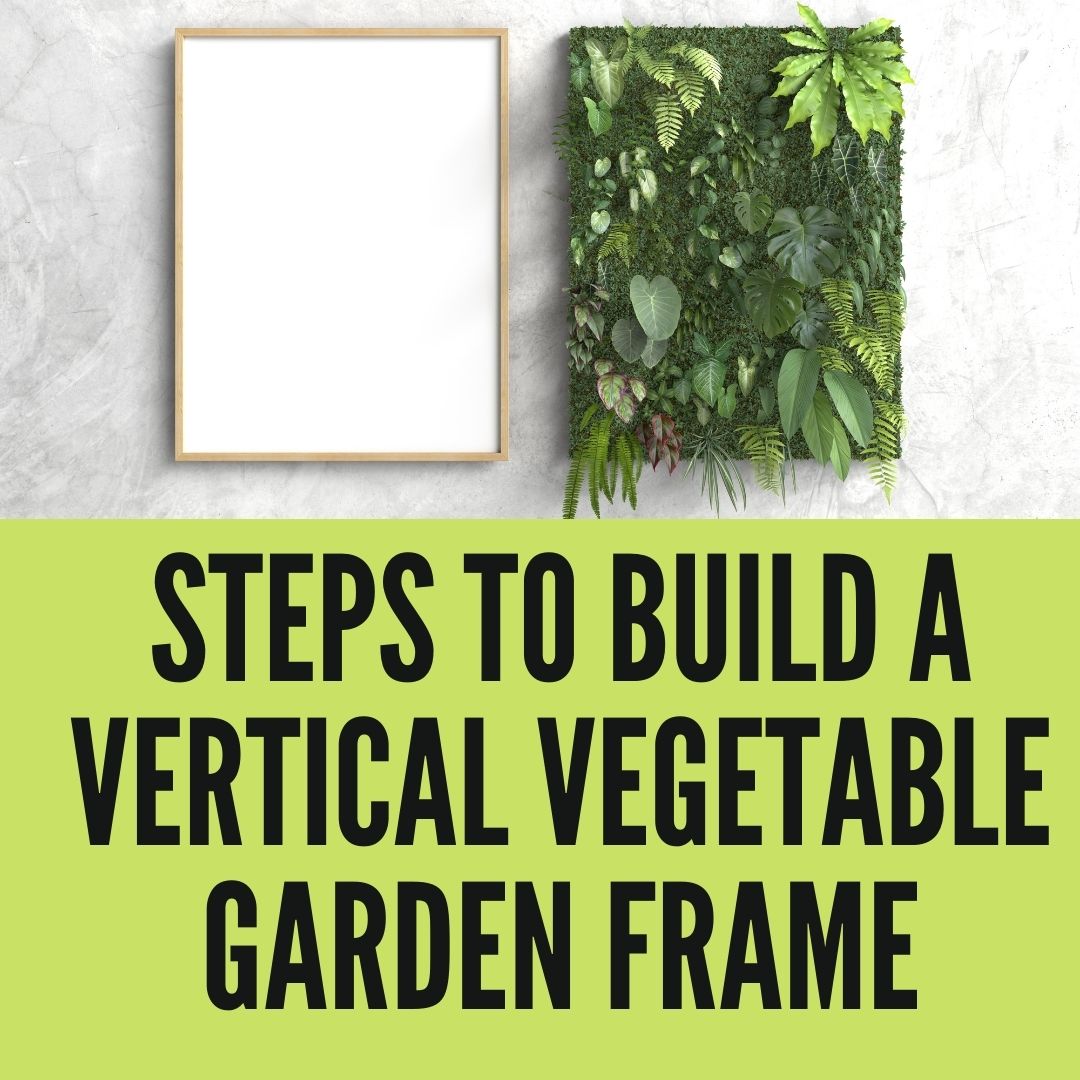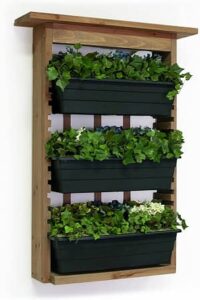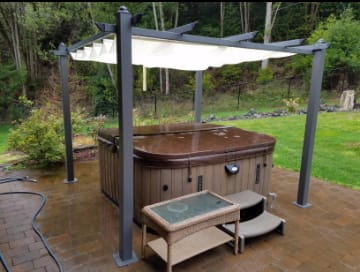Today, I am going to tell you exactly how to build a vertical vegetable garden frame.
Are into gardening but you don’t have that much space in your lot? Then a vertical vegetable garden is a perfect solution. Vertical farming is one step more efficient than typical farming in a limited space.
With some simple ways, you can start vertical farming for yourself. You can even take it a step further which, no exaggerating, could be a possible solution for mankind’s food supply for the next generation.
So let’s find out how you can start vertical farming for yourself.
What is vertical farming?
As the name suggests, vertical farming is a type of farming that is, unlike traditional horizontal farming, done vertically. So you can plant more trees in a limited space and get the most out of your land.
They not only give you more vegetables to grow but also give your garden a beautiful look and serve as a focal point of your garden. So now let’s find out what you need for a vertical garden.
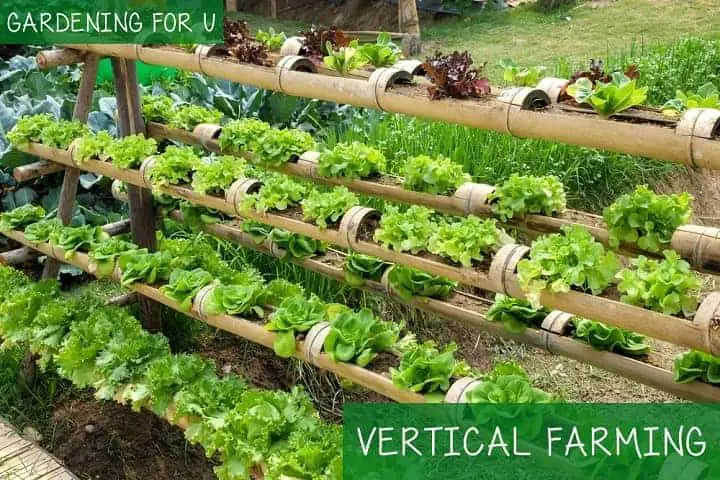
What do you need for a vertical garden?
For a vertical garden, you need to choose the right crops to grow. You will be needing strong vertical frames for plants to grow on. Very often planters are needed for a vertical garden.
- Pots or bottles or any type of containers
- Plants
- Soil
- Water
With a bit of creativity and some planning, you can have a beautiful garden with crops growing for the sky. There are many ways for a vertical garden in your space.
You can look at your resources and come up with your own creative way to fit a vertical vegetable garden in your land. We will look at some ideas along with the selection.
5 Steps to Build a vertical vegetable garden Frame
1) Plant selection for vertical vegetable garden
Climbers are the most logical plant for vertical growth. The reason is quite obvious. They can be easily fit into any shapes and sizes and you can train them easily at your will.
They also take small spaces but more vegetables for you. Some climbers you can choose are climbing peas, sweet potatoes, vining tomatoes, sprawling types of zucchini, cucumber, melon, squash or grape vine etc.
But you have to be careful about what type of climbers are suitable for where. Such as if you are planting in shade, choose a plant that is suitable for shade.

Also, you can grow in small containers. In that case, many short-growing plants are suitable.
Such as strawberry, tomato, arugula, mizuna, mustard, carrots (small), radish, onion, chard, etc.
2) Planting in pots/ containers
Planting in pots or small containers is the simplest way of vertical farming. We have discussed what types of plants are best for this.
Now let’s choose our containers. As for the size of containers choose one that is suitable for your crops.
You can buy planters that can hang around. Or you can even recycle bottles. Cut a bottle in two halves and you can use both halves for your plant.
Add hooks so that they can be hanged according to your will. Just make sure it has a drain system for the extra water to pass. Now you can hang them at any place.
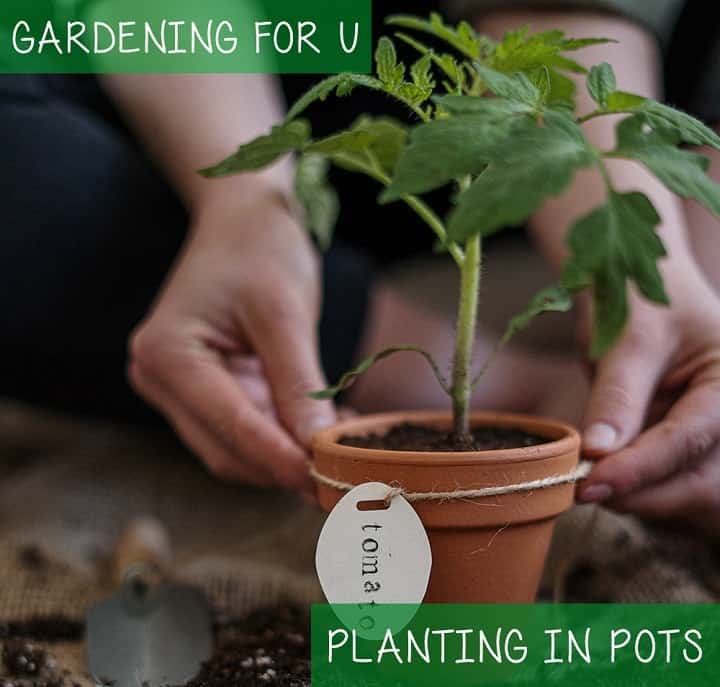
Be it indoors or outdoors they will surely look great. You can even put them on a vegetable ladder.
Oh, and even if you don’t want to use pots or bottles you might wanna use plant pockets.
Make your pockets or sacks out of some old clothes. Fill soil and put in your favorite plants to grow.
3) Watering the plants
After planting, the immediate next thing you need to do is to water the plants. Water is essential for them to adapt and even live. The sooner you water them, after planting the better it is for them.
4) Leave them for 2 weeks
You have finished planting and watering. The next thing you need to do is to just leave them for a while.
Let them adapt and grow for 2 weeks. Plants need time to grow.
5) Put them vertically
After the plants grow a little, you just have to put the pots or bottles vertically. And you are done.
Now you have your own vertical vegetable garden frame.
But wait, what if you do not have the time or expertise to make your vertical garden frame by yourself?
No worries, we have got you. Here are a few vertical vegetable garden planters on amazon.
Vertical vegetable garden in amazon
Vertical gardening for climbers
Vertical gardening is mostly about climbing plants and vertical supports for it. All climbers need a strong frame for growing and supporting themselves.
Now supports can be of different types. A simple and natural way is a row of bamboo canes. Just place them to your taste and plant your crop and let them grow around them.
Let them find their own way to the top or you can tie them to guide their way. Make sure your canes are strong enough to support and ram them firmly. Use very few stones for firmness but keep them to bare minimum.
If you want a bit more complex support, you might happen to have a pergola (arbors) at your garden. Use them to grow some passionfruit or grapevines.
Or you can grow climbing squashes or coloured beans with their coloured fruits or pods. If you don’t have a pergola, we will show a step by step process for building one. Or you can just seek help from a professional.
Trellis is a great help for climbing vegetables or sweet peas. You can make a trellis out of wood or bamboo. You can even make one out of ropes. Or you can just buy one. But to have a wall full of green peas you must try using a trellis.
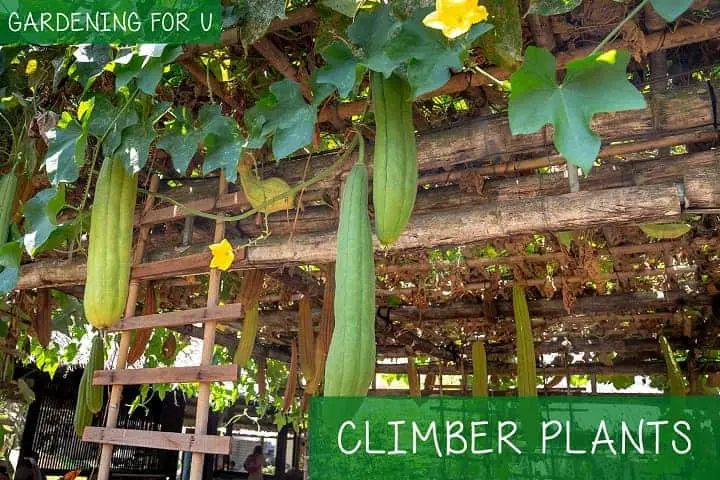
As an alternative, you may also use wicker or bamboo wigwams which are undeniably very much space-saving and very attractive.
How to build a basic pergola?
To build a basic pergola you must plan out your steps very carefully before getting into the business. Plan and measure your sizes and ratio thoroughly.
You also must have confidence or else things might get messed up. To build a pergola ( which will be higher than 1 meter) you might need building consent. So check your local authorities for building regulations.
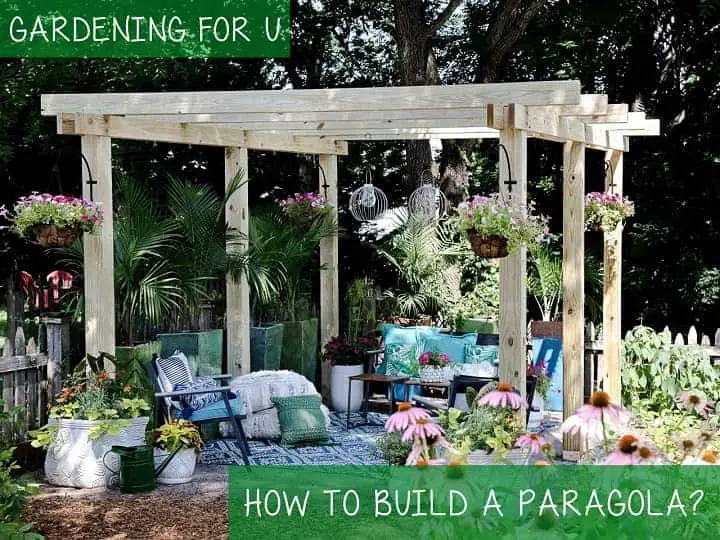
Now let’s get into the business.
- Step 1: Mark where the post holes will go. Make sure the post holes are in their proper places. And measure the diagonals to keep them squared.
- Step 2: Build profiles and string lines. For a squared area profiles and string lines are essential. Build your profiles at least half a meter back of your profile.
Nail down 2 4*1 timber for each profile and level them down. Pin 2 nails for string lines. Your string lines will be the outside line of the posts.
- Step 3: Dig the post holes. If you are using concrete in the post holes, make sure the post holes are squared.
- Step 4: Put in posts. Put a piece of concrete in the hole to sit off the ground. Line them against the string lines. It’s better to use braces to hold them tight.
- Step 5: Pour your concrete/soil. If you are using soil, then use rocks with them and ram them hard. If you are using concrete, vibrate the concrete to leave no air holes.
Now that you have a pretty solid post you can remove the strings, profiles, and braces.
- Step 6: Mark the height of your post and rebate for the bearer. Mark your height and rebates.
To transfer your marking to another post, you can use a nail and a timber, and a lever to measure it correctly. You will be using 2 parallel bearers.
- Step 7: Cut the height and rebate according to your mark.
- Step 8: Measure your bearers. Extend your bearers equally on both sides of your posts. Shape your bearers a bit.
Mark your bearers for the rafters and make sure they are equally spaced.
- Step 10: Cut out your rafters and battens. Your battens will go onto the rafters.
- Step 11: Put your bearers onto the rebates and drill holes for bolts.
- Step 12: Lay down your rafters onto the bearers and nail them
- Step 13: Lay your battens onto the rafters and nail them too.
Now you have a nice pergola for your sweet sweet peas.
Industrializing
Vertical vegetable gardening can be industrialized which will produce mass amounts of crops fully organically.
One method is to use giant columns with small pockets in them for the plants. This can be inside a greenhouse where you can control the weather.
You can control the nutrition of the plants. This will produce 2-3 times more crops in a limited area. This might be a solution as the urban land is becoming lesser and lesser.
Colclusion
If you have a better understanding of how to build a vertical vegetable garden frame. Let us know in the comment section.
FAQ about vertical vegetable gardening
What vegetables can you grow in a vertical garden?
| Beans | Kale |
| Carrots | Swiss Chard |
| Tomatoes (patio) | Mustard Greens |
| Garlic | Spinach |
| Onions (mini) | Leaf Lettuce |
| Peppers (compact) | Cabbage |
| Cucumbers (mini) | Romaine Lettuce |
Can you do vertical vegetable garden using plastic bottles?
Yes, you can do your vertical vegetable garden using spare plastic bottles.
By using plastic bottles in a creative way you can do that pretty easily.
And as the plastic does not leak water, indoor vertical vegetable gardening would be a great idea if you use plastic bottles.
How do you turn a plastic bottle into a vertical garden?
You just have to cut off the upper half of the plastic bottle and use the lower half of the bottle as the pot for the plant to have its root as well as the soil in it.
Do you wanna know how to begin low-maintenance gardening? Read this article
You can find some vegetable garden ideas here.
